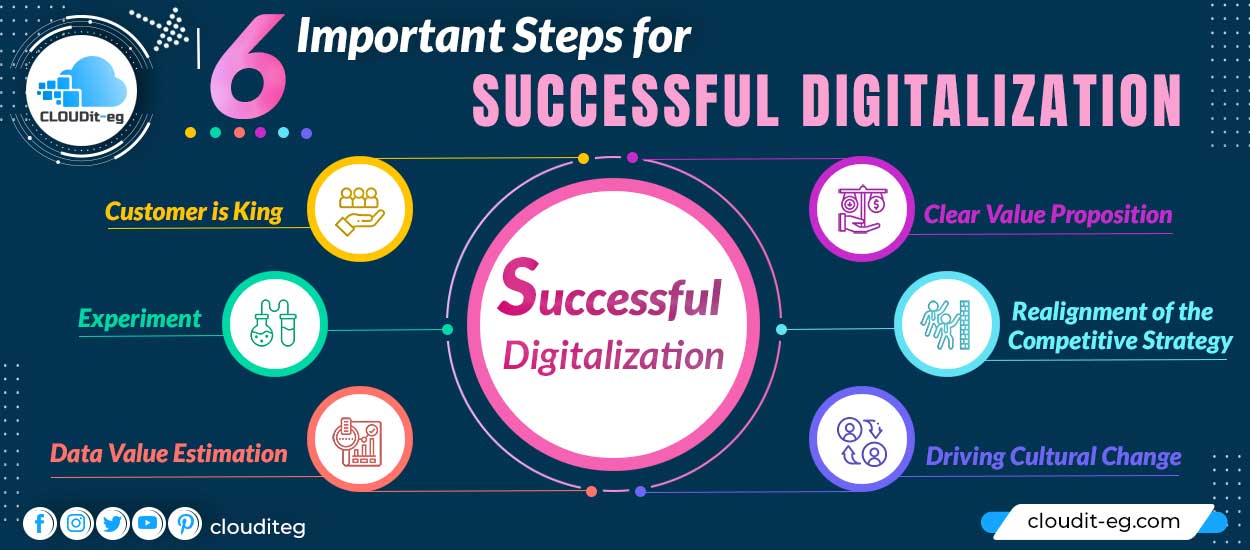In order for companies to be able to achieve a successful digitalization, some areas must be considered in the strategy. You can find out what these are and what companies should pay attention to here.
With digitization, companies have to network a wide variety of specialist and technology departments. This makes collaboration, products, and services more and more complex. The demands and needs of customers also increase with increasing complexity. Therefore, companies need a new strategic way of thinking in order to master digitization.
Six points for Successful Digitalization
1-The customer is king
Digital products and services also have to adapt to the needs of customers. Digital natives are particularly interesting as a target group for companies. They are online and exchange information about products on the Internet. You expect comprehensive customer service and self-service offers. The strategy should therefore include the customer.
2-Experiment
Innovations cannot be planned. It is, therefore, more important to experiment with different variants and to draw new knowledge from the results. The needs of customers are constantly changing, so companies also have to continuously adapt their strategies, and create and try out new hypotheses. Digitization makes it possible to analyze data and thus create personalized offers for different target groups.
3-Estimate the value of the data
New technologies make it possible to evaluate large amounts of data. From this, for example, insights into customer behavior, internal processes, and products can be drawn. Data-driven processes can be used to make exact recommendations and segment groups. This results in an economic advantage for the company as well as a benefit for the customer.
4- Clear value proposition
Companies have to put customer needs at the center of their strategy. That means customers expect benefits and added value from products and services. Companies should therefore keep their value proposition that they mention in customer communication. Customer feedback, experience, and external influences can change the value proposition and then have to be adapted to the customer again.
5- Realignment of the competitive strategy
Digital Transformation also results in new business models. Competitors may become partners in some areas while they are competitors again in other areas. Companies should therefore also consider unthinkable situations in their competitive strategy and use network effects.
6-Driving cultural change
For traditionally established companies, digital transformation can be a challenge. The company has to go through a cultural change. It is also important to involve employees and show them the effects of digitization. The following aspects lead to successful change.
- Establishing agile principles to achieve moving goals
- Create a culture of curiosity through a positive error culture
- Cross-departmental collaboration with experts
- Openness to cooperation with potential competitors
From strategy to transformation
The areas mentioned cannot be viewed separately from one another and overlap with one another. A digital strategy is essential to successfully implement digital transformation. Agile work processes and the will to change are becoming more and more important. It is therefore important to regularly question processes and habits and to adapt the strategy to changes if necessary.




